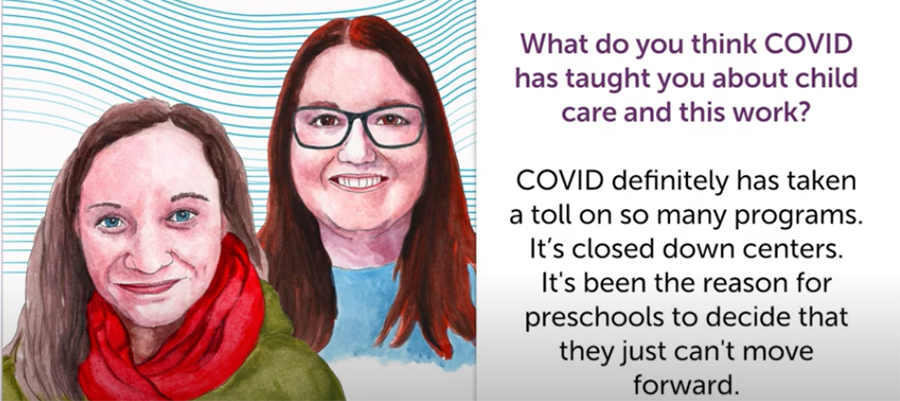Year after year, CCAoA’s annual research report has found that the price of child care is too high for too many families. The good news is that change may be coming. Earlier this year, President Biden proposed big investments in child care and preschool. This month, Congress has put pen to paper and crafted legislation, called the Build Back Better Act, to make those investments a reality.
Big picture, if the Build Back Better Act becomes law:
- Children from birth through age 5 would have access to affordable, high-quality child care and preschool.
- As the child care program is implemented, more and more families would gain access each year to a guarantee of support to afford child care, with their contributions to the cost of care capped at 7% of their income. Once the program is fully implemented, the families of nearly 10 million children under the age of 6 would be eligible.
- Three- and four-year olds would have the choice of attending free preschool, in a child care center, a family child care home, a Head Start program or a local school. States would develop preschool standards to ensure the programs meet key requirements.
- Child care programs would be paid for the full cost of providing high-quality care, including compensation for providers that reflects the cost of providing that care. These payments could flow through contracts, grants or certificates/subsidies.
- The federal government and states would invest in quality- and supply-building activities such as startup, expansion and quality grants to providers; training and professional development; and quality activities described in the Child Care and Development Block Grant (CCDBG). These activities can all be administered by child care resource and referral agencies.
Want to dig into the details? Read CCAoA's Memo on the House’s proposed Build Back Better Act.
There are still several steps before the Build Back Better Act becomes law.
- Congress develops legislative language (current status in the Senate as of 9/20/21).
- Committees in each chamber (the House of Representatives and the Senate) debate the legislative language and vote to approve it, sometimes with changes (current status in the House of Representatives as of 9/20/21).
- Legislative text from Committees is combined into one bill.
- Both the House of Representatives and the Senate pass identical legislation. This can be achieved by having one chamber vote first and “send” the bill to the other.
- The President signs the bill into law.
CCAoA will continue pushing Congress to support child care resource and referral agencies through the legislation, and to ensure we get the best possible policies within the process and the allocation of funding available.
Want to learn more about where things stand in Congress? Watch CCAoA’s Federal Investments In Child Care: A Policy Update webinar recording. 





